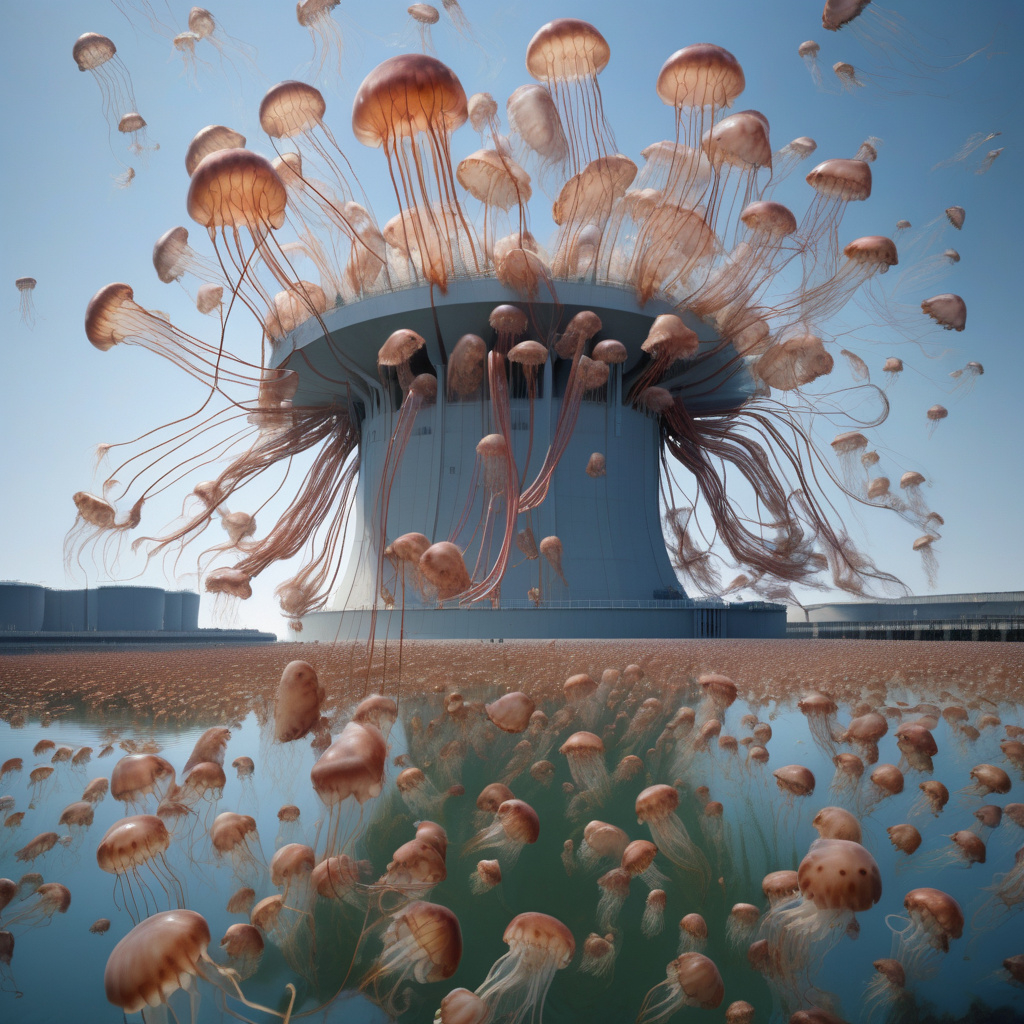Jellyfish Swarm Strikes One of France’s Largest Nuclear Plants Twice in a Month
A swarm of jellyfish caused officials at Paluel’s nuclear power plant to shut down one of its reactors last week. This incident marked the second time in a month that the plant had to halt operations due to these gelatinous sea creatures clogging the water intake pipes. The presence of jellyfish near power plants is not a new phenomenon, but the frequency and scale of these incidents are raising concerns among environmentalists and energy experts.
The Paluel nuclear power plant, located on the coast of Normandy, is one of the largest in France, supplying electricity to millions of households. However, its proximity to the sea makes it vulnerable to jellyfish swarms, especially during the summer months when these creatures are abundant in the waters. When jellyfish are sucked into the plant’s cooling system through the water intake pipes, they can obstruct the flow and cause the reactors to overheat, posing a risk to the plant’s safety and efficiency.
The recent shutdowns at the Paluel plant highlight the challenges that nuclear facilities face in dealing with unexpected natural events. While jellyfish swarms are a natural occurrence, their increasing numbers and the impact of climate change on marine ecosystems are exacerbating the problem. Warmer sea temperatures and changes in ocean currents can lead to the proliferation of jellyfish, creating more frequent and severe disruptions for coastal industries like nuclear power plants.
In response to these incidents, plant officials are exploring various strategies to mitigate the impact of jellyfish on their operations. One approach is to improve the filtration systems at the water intake points to prevent jellyfish from entering the pipes. By installing finer mesh screens and other barriers, the plant can reduce the risk of clogging and minimize the chances of reactor shutdowns. Additionally, researchers are studying the behavior and migration patterns of jellyfish to develop early warning systems that can alert plant operators to potential swarms in the vicinity.
Beyond technological solutions, environmentalists are calling for broader actions to address the root causes of jellyfish blooms. Pollution, overfishing, and habitat destruction are some of the factors that contribute to the proliferation of jellyfish populations. By promoting sustainable practices and ecosystem conservation, stakeholders can help restore the balance of marine ecosystems and reduce the frequency of jellyfish incidents near critical infrastructure like nuclear power plants.
As the threat of jellyfish swarms continues to loom over coastal industries, including nuclear power plants, proactive measures and collaborative efforts are essential to safeguarding both the environment and energy production. By combining scientific research, technological innovation, and environmental stewardship, stakeholders can work towards a more sustainable coexistence with these mesmerizing yet disruptive creatures of the sea.
#JellyfishSwarm, #NuclearPlant, #EnvironmentalImpact, #ClimateChange, #MarineEcosystems












